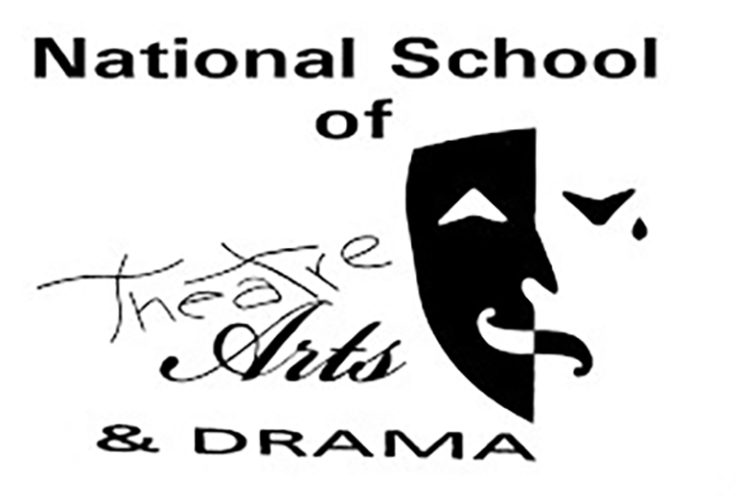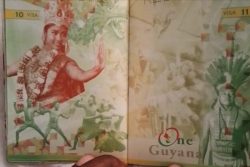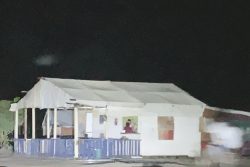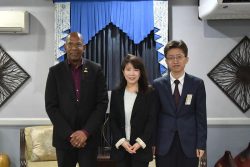 In Guyana there have been attempts to build a culture of theatre – that timeless and universal art that plays a crucial role in the building of a society, the defining of a people, the enlightenment of mankind, and the education and entertainment of all. There have been attempts to make theatre a part of the social timetable, an activity that is appreciated and so valued that it is both a factor of social refinement and a paying industry.
In Guyana there have been attempts to build a culture of theatre – that timeless and universal art that plays a crucial role in the building of a society, the defining of a people, the enlightenment of mankind, and the education and entertainment of all. There have been attempts to make theatre a part of the social timetable, an activity that is appreciated and so valued that it is both a factor of social refinement and a paying industry.
Shakespeare’s Hamlet Prince of Denmark once declared “the play’s the thing/ Wherein I’ll catch the conscience of the King”. And “the thing” has always been to get the attention of the audience, which through history, has proven itself to be the most important factor in theatre. Today that attempt continues in Guyanese society.
Generations ago in the Caribbean there was a culture of theatre when it was the place to go for the colonial elite and the local middle class. That changed when that same middle class theatre became professional and attracted large crowds including the working class audience. Plays could fill the auditorium and earn an income. But there was another, more drastic change in Guyana when that audience went astray, following a Pied Piper whose tune was technology in a material age of social media and alternative sources of entertainment – a new culture of modernity and technology.  There have since been renewed attempts to win back audiences and reinstate a culture in which people go to see plays. The audience of previous generations has aged, they lost confidence in a theatre whose standards they have argued have deteriorated and it is hard to drag them out these days to see drama performed. That is why the most recent attempts to rebuild that culture is so significantly taking place among the youth.
There have since been renewed attempts to win back audiences and reinstate a culture in which people go to see plays. The audience of previous generations has aged, they lost confidence in a theatre whose standards they have argued have deteriorated and it is hard to drag them out these days to see drama performed. That is why the most recent attempts to rebuild that culture is so significantly taking place among the youth.
This renewed bid to rebuild the culture has involved two or three very important factors. One is the National Drama Festival which flourished before it was halted by the previous government. It has not yet been reinstated by the present regime. It had built an infrastructure of community theatre, which was slowly developing the performance of plays in small unconventional venues and in outlying regions. People in those places were not accustomed to going to see drama, but in that scheme plays were being performed right on their doorsteps and they were going out to see them. This community theatre was also being contributed to by the outreach programme of the National School of Theatre Arts and Drama (NSTAD).
The other factor is the equally important rise of drama in secondary schools driven by CXC. A growing number of Guyanese secondary schools have been entering students for Theatre Arts. A smaller number has been doing Performing Arts at CAPE. A part of these studies is the practical examination for which the students have to perform the dramatisation of cultural forms, short improvisations and either manage longer productions or perform those plays themselves. They have been encouraged to open up these demonstrations to a public audience and some of them have taken up the idea. These productions have taken place on school premises or, in a very few instances, at outside venues like the Theatre Guild Playhouse.
Some years ago, teachers in New Amsterdam invited an audience to see the practicals performed. This move was led by Antacia Thomas at Berbice Education Institute (BEI), Mehelia McAlmont of Tutorial Academy and Shanelly Kendall at Berbice High School. Taking advantage of this initation were parents and close connections of the students who were performing, but there were also other members of the public. This created the beginnings of theatre in the New Amsterdam community with the ambitious intention that it would spread into something grander.
In December 2024 there was a full production on stage at the Theatre Guild Playhouse directed by Lloyd Thomas leader of the company Lloyd and D’Arts and drama teacher at Tutorial High School. The production was managed by CSEC Theatre Arts students of Tutorial High and St Stanislaus College and performed by the same students. This arrangement was in keeping with the CXC requirements for students doing the Option in Production Management as well as Costuming and Stage Management in the subject Theatre Arts. Thomas is a graduate of the NSTAD.
It was a Christmas production in two parts. One did a dramatisation including much humour around the theme of Santa Claus visiting the ghetto. The second segment was a recount of the Nativity story. It was presented in spoken word, song, scenes acted out and dance, which predominated the performance. The audience was offered several choreographed pieces used to enhance the plots. This was a full public performance that demonstrated the hope that schools would go public with their performances and help recreate the desired culture.
In the very short period of March and April alone so far in 2025 there have been four performances by secondary schools with varying degrees of public audienceship. There was a full production open to the public including advertising and sale of tickets titled “A Twisted Glimpse Of History”. This was also performed at a public venue, Lichas Hall in Linden, directed by NSTAD graduate Tomika Lewis, managed and performed by students of Christianburg Wismar Multilateral and Mackenzie High School. They were also required to manage, costume and stage a production, which they did through an adaptation of the play “Anansi” by Alistair Campbell.
This, again, was fulfilling the requirements of the intended community theatre by rebuilding activity at the now little used Lichas Hall and bringing drama to life in Linden, one of the regional locations. The play took a glimpse of history by rearranging the plot of Campbell’s play about the trickster hero Anansi. The main focus was the ship voyage across the Middle Passage, highlighting the survival and resurgence of the enslaved Africans.
Another performance was publicly advertised and performed at the Cyril Potter College of Education. This was the production “In the Wake of You” presented by the Theatre Arts students in collaboration with the Visual Arts students of Christ Church Secondary School led by yet another graduate of NSTAD and member of the National Drama Company (NDC) Frederick Minty.
This was a play that, of great interest, was written by one of the students Jada Wilson. It was based on a plot weaved around the cultural forms the wake and Kumina. It was fuelled by audience-catching melodramatic ingredients, family conflicts, infidelity, secrets and scandal with very imaginative and dramatic use of cultural forms. The Kumina is a dynamic traditional religious form of ancestor worship little known outside of Jamaica but very well explored in this play. The drama was spectacular and highly enriched by dance, choreographed by another student Lacresha Fraser. This scripting of the play by a student is another impressive development.
By now, performance in a make-shift theatre set up at the West Demerara Secondary School has become an annual feature. For a few years now the whole community has been invited to see the performance of the CXC practicals at the space in the school compound very well set up complete with stage, lighting and auditorium all engineered by the school’s drama teacher Taneka Caldeira, NSTAD graduate and member of the NDC.
This production was also based on the cultural forms Guyanese ring games and the Jamaican Kumina. Following the pattern of those forms the performance was also enriched by dances and music weaved into the presentation. This seems now firmly established in the West Bank community, having started out some years ago with parents of the students invited to see the work.
Region Three is now even further enriched by a similar endeavour at the Uitvlugt Secondary School where drama teacher Candacie Whaul joined the pioneering NSTAD graduates in introducing CXC Drama in a number of schools. Uitvlugt is therefore doing the CSEC subject for the first time this year and already they have opened it up beyond a private practical. The entire school was able to pay at the door for entry to see what was being performed – a dramatisation of ring games and an excerpt from the play “Anansi”. This is a good beginning that it is hoped will next year be shown to the entire community.
It must be pointed out that another school in Georgetown has been doing excellent work for years now. Led by UG graduate Shawn Kellman, Marian Academy drama students produce spectacular, well designed and articulated work each year covering different forms of drama according to the exam requirements. Their performance this year was, as usual, worthy of a public production, but they have not yet been persuaded to open it beyond a gathering of other students from the school as audience. If they do, based on what was seen this year, it would be quite rewarding.
In the meantime community theatre produced by the high schools is gaining ground. It speaks well for the CXC subjects because it shows how demanding and difficult they are as academic disciplines. They have been undervalued and under-rated yet they make significant demands on student skills and intellectual ability. In addition to all else, the practical outcomes of these studies can contribute to public theatre and the recovery of a culture of theatre in Guyana.









